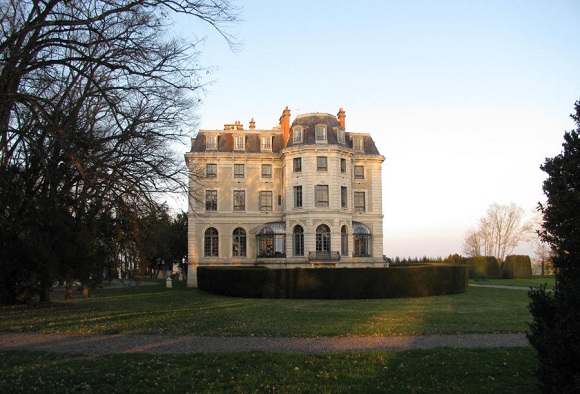
Leaving Chatel-Guyon in the late afternoon I felt the call of the hill rather than the plain, in part because I’ve never associated Auvergne with the plain, in part because hills are more exotic to me than flatlands. But I also felt the call of a 5-star hotel, and Château La Canière, the only luxury hotel within many miles, stood out in the plain. So there I went.
I would soon learn that the cereal plain (wheat, colza, barley, rye) is indeed part and parcel of Auvergne. The current owners of the hotel, the Monier family, were formerly in the flour business. After nine generations as millers (Monier is a transformation of meunier, meaning miller) they sold the business to a large competitor and entered the hotel business with the purchase Chateau La Canière.
The term “chateau” covers a wide range of large residences in France and La Canière belongs more to the mansion than the castle portion of that spectrum, but like any respectable chateau it’s reached at the end of a long tree-lined alley.
Replacing a previous structure on this site, the chateau was built in the 1880s to showcase the instruments, portraits and library of the chemist Antoine-Laurent Lavoisier (1743-1794) that had been inherited by a member of the Bérard de Chazelles family, and presumably to hold elegant parties. Lavoisier is considered the father of modern chemistry and credited with naming oxygen and hydrogen and developing various theories about air, combustion and other matters that I started forgetting soon after taking the Chemistry AP exam in 12th grade.
To support his passion for scientific research, Lavoisier had a job in Paris with the tax farming office known as the fermier général in pre-Revolutionary France. His research and analysis made him famous, but having “worked for the man” noted on your resumé tends to get noticed in times of revolution. Lavoisier tried to keep his head low during the Revolution, but was nevertheless sent to the guillotine during the Terror along with his fellow tax farmers. In response to attempts to save his head for its scientific smarts, a member of the revolutionary tribunal is said to have declared, “The Republic doesn’t need scientists” (La République n’a pas besoin de savants).
Chateau La Canière fell into disrepair after the last owner of the Bérard de Chazelles family was arrested by the Gestapo in 1943 for her role in the Resistance and deported to Ravensbruk in 1944. Purchased by a Dutch group in 2006 and rehabilitated as a hotel and restaurant, the the project had barely taken off when the group sold it in 2010 to the Monier family. The Moniers have now upgraded La Canière to its current 5-star status.
La Canière is not as heavily staffed as a city 5-star, so employees are necessarily at your immediate beck and call. Nevertheless, the infrastructure of well-being is present. A gastronomic restaurant called Lavoisier occupies an outbuilding (to the right, above) that is partially a remnant, vastly transformed, of the chateau that preceded the current mansion. A 17th-century orangerie (citrus greenhouse) is found on the opposite side of the chateau. There’s also a swimming pool (open summer only) in the back. In addition to some handsome wood-paneled reception rooms, including one that serves as the breakfast room, the mansion/chateau has a chapel and, more interestingly, a cozy library where one can read, write and/or drink, day or night.
La Canière is now operated by two brothers, Pierre, 24, and André, 28, whose grandfather, Denys, who bears the title “manager,” can be seen puttering around the place. That sounds like a great set-up for a British sitcom, but the French are better at chateau-hotels than at sitcoms.
There are 26 rooms and suites of high comfort. Prices run 130-600€ depending on size, split into six categories, making the hotel accessible for moderate as well as higher budgets. The ground-floor rooms are spacious and wheelchair accessible, though I preferred the upper rooms, particularly the “traditional” rooms that recall (with mostly contemporary furniture) the style of what would have been the heyday of the private chateau here in the late 19th and early 20th centuries. My own airy room on the top floor had more contemporary character—lively carpet, its ceiling beams and its bathroom partially open to the room—and a clear view over the surrounding cereal fields. Craning my neck to the south I could see a milky view of the mountainous region of the Volcano Park and the peak of Puy de Dome visible on the horizon.
The Lavoisier collection was sold in 1925, including a famous portrait by Jacques-Louis David of the scientist and his wife, now at the Metropolitan Museum of Art. If I continue to speak of Lavoisier here it’s because he can’t be ignored. A copy of that portrait can be seen at La Canière along with other portraits of the chemist, reproduced ad nauseam throughout the hotel. Lavoisier is everywhere. The restaurant is named after him. Portraits, nearly always the same, line hallways and overlook beds. I was reminded of what Oscar Wilde, referring the wallpaper in his rundown hotel room in Paris, said as he lay dying, “One or the other of us has to go.”
Nevertheless, there were nice things to stay for.
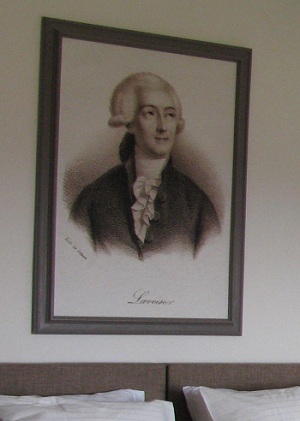 Over a fine dinner in the hotel’s gastronomic restaurant, Pierre Monier, the young director, informed me that his family had actually removed a number of the Lavoisier portraits since purchasing the property and that I might only have been overwhelmed by those that remain because, unlike other clients, I took a complete tour of the hotel and its hallways. Most guests would only see a few. Be that as it may, and without suggesting that a traveler not come this way because of an overdose of Lavoisiers, they might consider removing a few more.
Over a fine dinner in the hotel’s gastronomic restaurant, Pierre Monier, the young director, informed me that his family had actually removed a number of the Lavoisier portraits since purchasing the property and that I might only have been overwhelmed by those that remain because, unlike other clients, I took a complete tour of the hotel and its hallways. Most guests would only see a few. Be that as it may, and without suggesting that a traveler not come this way because of an overdose of Lavoisiers, they might consider removing a few more.
The pool, the restaurant, the lounge areas, the breakfast room, the atrium lobby, the library, the nearly 20 acres of lawn and wood, and the wifi undoubtedly make La Canière an attractive place to relax, reflect and romance or for a work retreat.
Château La Canière is about 10 miles from the hot springs/spa town of Chatel-Guyon by way of the Riom region. Though Riom is larger than Chatel-Guyon, it’s lesser known beyond the region. The director of the Riom tourist office was kind enough to meet me at the hotel to tell me about the treasures of the area such as the Renaissance buildings in the center of Riom and the cute neighboring villages of Mozac and Marsat.
As we shook hands to part I promised her that I would consider getting up at 6am to have a quick look at those Renaissance buildings and cute villages before heading into the volcanic landscape, but after a drink in the library, then a late dinner in the restaurant, then a long gaze up at the stars from my bedroom window, I looked long into Lavoisier’s eyes above my bed and admitted to myself that I had lied.
Château la Canière. Rue de la Croix Blanche, 63260 Thuret. Tel. 04 73 97 98 44. Member of Chateaux & Hotels Collection. The hotel is 2 miles outside the center of the village of Thuret. The Riom train station is 9 miles away.
Riom Tourist Office. 27 place de la Fédération, 63200 Riom. Tel. 04 73 38 59 45.
© 2012, Gary Lee Kraut (text and photos)
Continue to:
Part V: Mont Dore, Saint Nectaire, Chaudes-Aigues and Yu.
Or return to:
Part I: From Paris to Clermont-Ferrand
Part II: An Introduction to Spa Towns and Hot Springs By Way of Royat
Part III: Chatel-Guyon


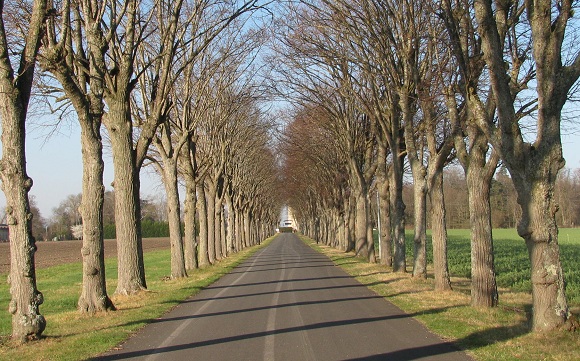
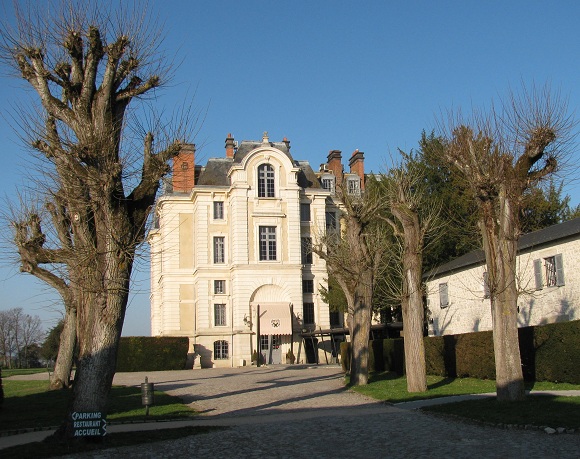
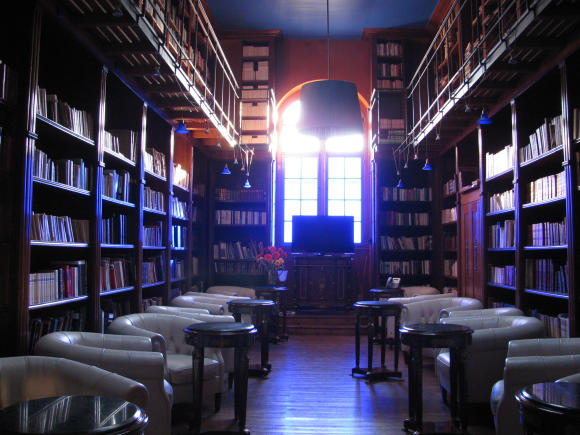
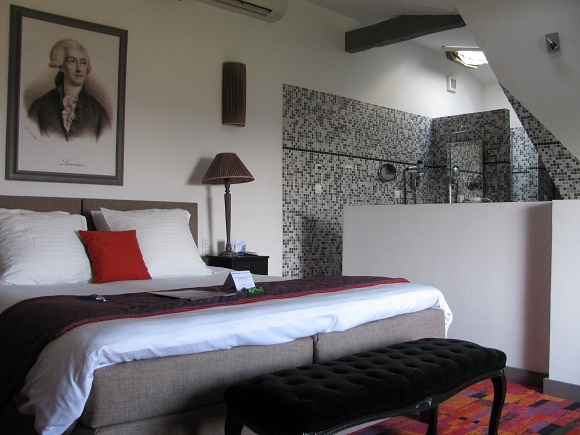
I really enjoy your writing! Too bads part V and VI aren’t up, I did want to read about Mont Dore and St Nectaire in particular!
Sorry you had to hear ‘Feelings’. Sorry anyone has to. At any rate, what are you thoughts on Le Puy en Velay? Guidebooks seem to adore it and I’m wondering if one day suffices. Thank, Martin
Le Puy en Valey can be visited in a leisurely day. It’s the smaller sights and natural beauty in the surroundings that led themselves to a longer stay.
Gary